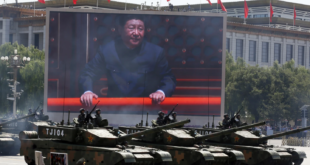 ISLAMABAD (Reuters) – A day after a bomb attack outside the Danish embassy, Pakistani investigators questioned residents and tested the residue of the explosives used, while suspicion for the blast fell on al Qaeda or its allies.
ISLAMABAD (Reuters) – A day after a bomb attack outside the Danish embassy, Pakistani investigators questioned residents and tested the residue of the explosives used, while suspicion for the blast fell on al Qaeda or its allies.
Monday’s suicide car bombing in the capital, Islamabad, followed a relative lull in militant attacks since a new government made up of parties opposed to President Pervez Musharraf came to power after February elections.
Though all those killed were Pakistanis, the blast will raise concern about the safety of foreigners in Pakistan.
One security analyst saw the attack as an open-and-shut case of jihadis fulfilling an open-ended threat to attack the embassy, because of cartoons of the Prophet Mohammad that Danish newspapers published in late 2005.
“It was to be expected that they would do something,” said Ikram Sehgal, chairman of the Group Four Securicor (G4S) companies in Pakistan.
The cartoons, considered blasphemous by Muslims, sparked deadly protests and attacks on Danish missions. The embassy in Islamabad was temporarily shut in 2006 after protests, and it was reported to have received threats.
The Netherlands embassy relocated from a nearby residential area to a well-protected hotel last month, because of similar threats leveled after an anti-immigration lawmaker made a film regarded as anti-Muslim.
Norway’s embassy, round the corner from the Danish mission, has been closed since the attack.
No one claimed responsibility for the blast but the Danish Security and Intelligence Service said it believed the embassy was the target and al Qaeda or an allied group was responsible.
The agency said it was sending a team to Pakistan to investigate and it was raising its “terror threat assessment level” against Danes abroad.
“Extremists can be inspired by the attack in Pakistan,” the agency’s director, Jakob Scharf, said in a statement.
DOUBT
But retired Lieutenant General Asad Durrani, the former head of the Inter-Services Intelligence agency, said he doubted the cartoons were the main motive for the attack.
Durrani said it could have been aimed at disrupting the new government’s peace talks with militants operating in lawless tribal areas on the Afghan border.
The peace talks have widespread support in Pakistan, but the United States and some of Pakistan’s other allies fear deals will free up Taliban and al Qaeda militants to intensify their war against the West in Afghanistan and beyond.
Durrani said it was unlikely Baitullah Mehsud, a Pakistani Taliban leader, was behind the embassy bombing, as the army had boxed in his group in mountains of South Waziristan, and he was keen on reaching a pact.
“If there are any other factions that do not want this peace process to go on, one can imagine them doing it,” Durrani said.
The attack coincided with a fresh bout of intense speculation about how long U.S. ally Musharraf can hang onto office as he lacks support from the new government.
Western allies are concerned about prolonged political instability in a nuclear-armed Muslim state facing growing economic woes.
Aside from the six people killed, about 25 people were wounded in the blast in the upmarket residential neighbourhood, where several other embassies were located.
A team of police and intelligence agents has been set up to investigate.
“Samples have been sent to the laboratory to determine what type of explosive was used,” said the police officer in charge of the investigation, Mohammad Ashraf Shah, adding that police were trying to draw a sketch of the bomber based on witness accounts.
Pakistan’s main stock index, battered in recent weeks by worries over political stability, gained throughout the day.
Dealers said investors had factored in political risk and were more interested in a continuation of investor-friendly policies. Currency traders said the rupee was unaffected.
 Eurasia Press & News
Eurasia Press & News



